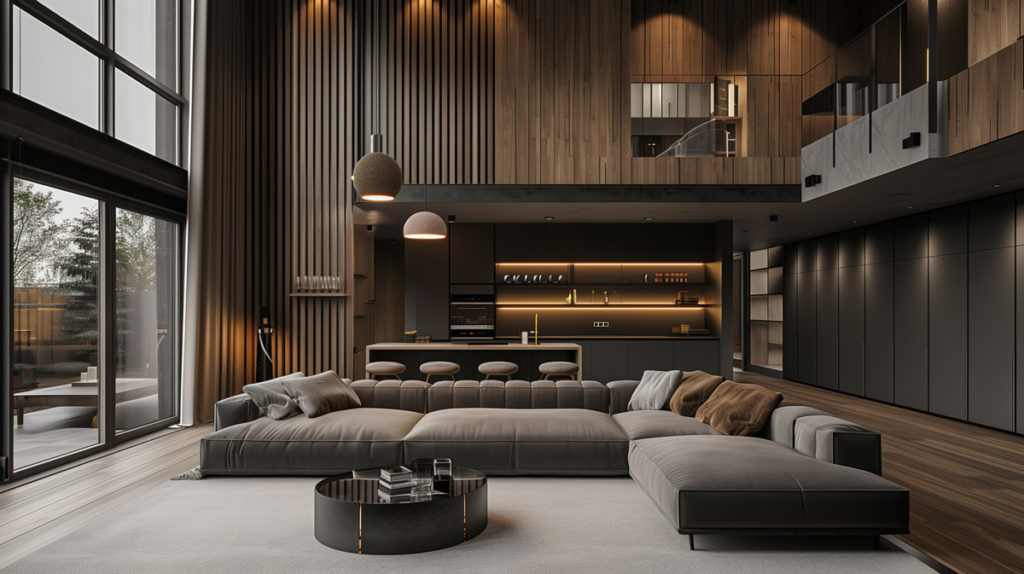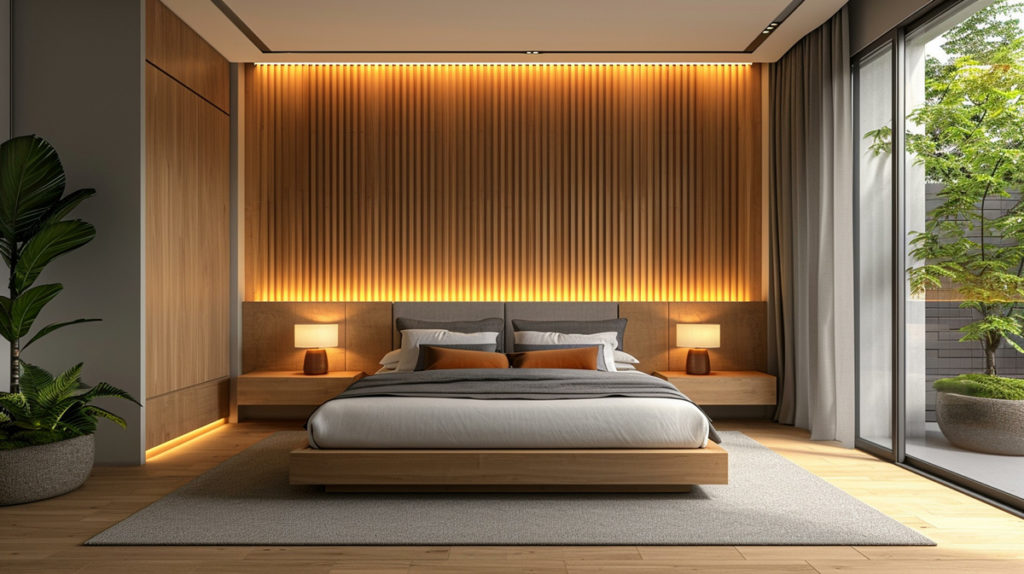
Wall panelling, often celebrated for its aesthetic appeal, has a rich history that spans centuries. It also offers functional benefits beyond its decorative powers, helping to enhance a space’s practicality and longevity. From improved insulation to soundproofing and durability, wall panelling is a powerful solution in modern interior design.
Wall Panelling & Insulation
One of the most significant benefits is the ability to add extra insulation. Traditional wall panelling materials like wood naturally help maintain a consistent indoor temperature. Panelling reduces heat loss during the winter and keeps interiors cooler during the summer by adding an extra layer to the walls. This creates a more comfortable living environment and contributes to energy efficiency, potentially reducing heating and cooling costs.
Contemporary solutions have taken this a step further. Modern materials and designs have advanced insulation properties. For example, composite materials or panels with built-in insulation layers can significantly boost the insulation provided. This makes it an intelligent choice for homeowners looking to improve energy efficiency without sacrificing style.
Superior Soundproofing
In today’s bustling world, peace and quiet are often hard to come by, making soundproofing a key part of home and office design. The density and structure of panelling materials can absorb and block sound waves, reducing the amount of noise that penetrates through walls and dampening noise from outside sources and within the building itself.
Acoustic panels designed explicitly for soundproofing have high sound absorption properties. They effectively reduce echo and background noise, making them ideal for cinema rooms, recording studios, offices, and any space where sound control is essential.

Durability and Protection
Wall panelling is renowned for its durability. Unlike plasterboard, which can be easily damaged by everyday wear and tear, panelling provides a robust and resilient surface that stands up well to impacts. This durability makes it great for high-traffic areas such as hallways, kitchens, and commercial spaces. Wooden panelling, for example, can withstand bumps, scratches, and other minor damages that would mar painted walls.
Moreover, it can protect the underlying structure of the building. By shielding walls from moisture, panelling helps prevent mould and mildew, which can cause significant damage over time. Due to their water-resistant properties, certain types of panelling, like PVC and vinyl, are particularly effective in wet areas like bathrooms and basements.
Easy Maintenance and Longevity
Maintenance is another area where wall panelling shines. Painted walls often require regular touch-ups and repainting, especially in busy households or commercial settings. In contrast, many types of wall panelling are designed for easy cleaning and minimal maintenance. For example, wood panels can be wiped down with a damp cloth, and vinyl or composite panels can be cleaned with mild detergents. This ease of maintenance ensures that panelling remains attractive and functional for many years.
Wall panelling’s longevity also makes it a cost-effective choice. High-quality panelling materials, properly installed and maintained, can last for decades. This long lifespan, coupled with the reduced need for repairs and maintenance makes it a wise investment for homeowners and businesses.

Environmental Benefits of Wall Panelling
In an age where sustainability is increasingly essential, wall panelling offers several environmental benefits. Many panelling materials are sourced from sustainable resources. For instance, wood panelling can be made from reclaimed or responsibly harvested timber, reducing the environmental impact of construction. Additionally, some modern panelling options are made from recycled materials or are designed to be recyclable at the end of their life cycle.
Furthermore, the enhanced insulation properties of wall panelling contribute to energy conservation, which benefits the environment. By reducing the need for heating and cooling, wall panelling helps lower energy consumption and, consequently, a building’s carbon footprint.
Versatility in Design
While the functional benefits of wall panelling are impressive, it’s impossible to ignore its versatility in design. Wall panelling has various styles, materials, and finishes, allowing endless customization. From traditional wainscoting and beadboard to contemporary 3D panels and sleek, minimalist designs, there is a panelling option to suit every taste and interior style.
This versatility extends to its application. Wall panelling can create accent walls, cover entire rooms, or highlight architectural features such as fireplaces and staircases. Its adaptability makes it a valuable tool for interior designers and homeowners looking to add character and depth to a space.
Conclusion
While it is often appreciated for its decorative appeal, wall panelling is more than just an aesthetic enhancement. Its functional benefits—including improved insulation, superior soundproofing, durability, easy maintenance, and environmental advantages—make it a valuable addition to any home or commercial space. So whether you are remodelling an old building or designing a new one, consider the multifaceted benefits of wall panelling. It’s a practical, stylish, and sustainable choice that enhances the beauty and functionality of any interior.










